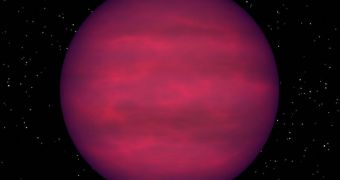An international collaboration of investigators says it has recently developed a new explanation for how stars known as brown dwarfs form. These objects sometimes blur the difference between very large gas giants and small stars, so explaining how they appear and why has been very difficult.
Astronomers have been trying to do this for many years, but thus far their models have fallen short of explaining the objects. The new proposal combines data from a number of existing theories, and has considerable implications for understanding this class of stars.
By studying brown dwarfs in detail, it may become possible to determine whether brown dwarfs, in general, are suitable for hosting extrasolar planets in their habitable zones. Details of the new investigation were published in the latest issue of the esteemed Astrophysical Journal.
The research team behind the study was led by expert Shantanu Basu, from the Western University and Eduard Vorobyov, from the University of Vienna, in Austria. The scientists say that brown dwarfs can only be identified through infrared telescopes, due to their low temperatures.
Although they were first theorized to exist decades ago, it wasn't until the mid-1990s that the first brown dwarfs were found. Since then, several hundred such objects have been cataloged by surveys.
“There could be significant mass in the universe that is locked up in brown dwarfs and contribute at least part of the budget for the Universe's missing dark matter,” explains Basu, who is a professor at the WU Department of Physics and Astronomy.
“And the common idea that the first stars in the early Universe were only of very high mass may also need revision,” the researcher goes on to say. The team used the Shared Hierarchical Academic Research Computing Network (SHARCNET) to conduct their simulations.
The group determined that the patterns in which gas swirls around a newly formed star (protostar) play an important role in brown dwarf formation. The team believes that the new model also shows why many brown dwarfs are very close to parent stars.
SHARCNET simulations revealed that a large number of interactions occur within the protoplanetary disc that forms around protostars. Materials may get ejected from within the disc, and then go on to form brown dwarfs by coalescing elsewhere, Astrobiology Magazine reports.

 14 DAY TRIAL //
14 DAY TRIAL //